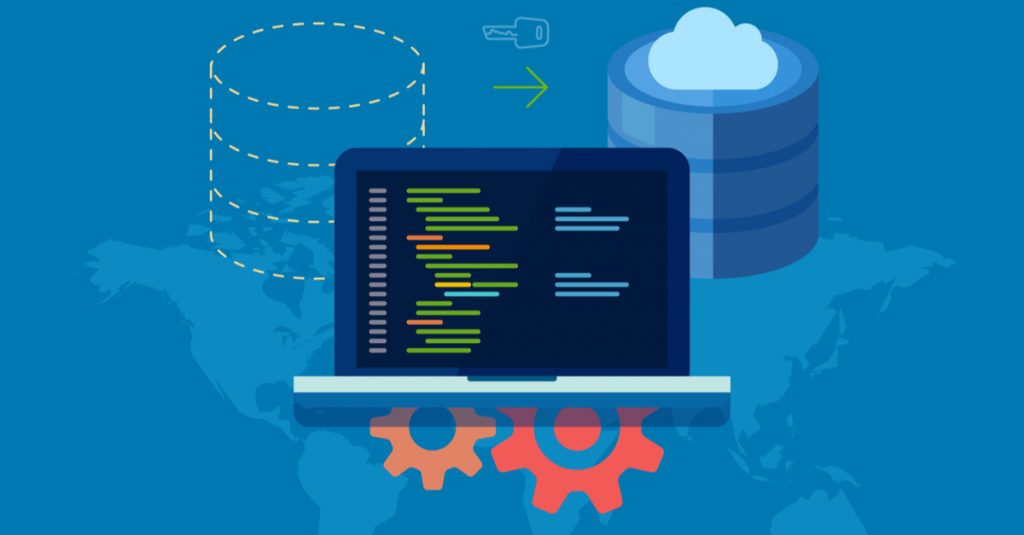An E-Commerce retailer hosts the much-awaited Black-Friday sale on their shopping application. The surge of consumers’ transactions crashes the application. A sales campaign that could have skyrocketed the retailer’s profit margin turned into the retailer’s in-house IT team’s nightmare. It took them hours to add or reduce features to get the application running.
The situation could have been entirely different if the app was in the hands of cloud service providers. Additional features such as virtual machines could have been immediately deployed through the cloud to take care of the huge traffic on the application.
| Gartner’s survey predicts that cloud migration will yield about over 17% revenue growth for enterprises in 2022. |
On this note, here’s taking a better look at the top benefits of app migration to the cloud.
Better security– Migrating application to the cloud effectively reduces the chances of unauthorized access to systems that store business data and applications. Cloud services have in-built robust security features such as cross enterprise visibility, security analytics, and periodic updates. Automatic security updates are enabled to shield applications and its data from the latest data security threats.
Better scalability– The shared and unified structure of cloud services is an ideal partner for today’s on-demand business model. IT teams can easily add or remove features from an application based on consumer demands. Cloud platforms support a variety of workloads to scale up an application to boost its performance. When an application is migrated to the cloud, it can adjust its assets level to match the amount of traffic surge, thereby preventing an operational downtime.
Better disaster recovery management– The cloud-based disaster-recovery-as-a-service (DRaaS) Cloud disaster recovery management entails storing application data on different servers across multiple geographical locations. This can help prevent data loss due to local natural calamities. The DRaaS management includes the warm standby approach. This involves maintaining a toned-down version of an application in the main server but in a different location. In case of a disaster, the enterprise can switch on to the functionality of the application stored in the cloud in a different region.
Better cost optimization– Moving application to the cloud exempts enterprises from the expenses on server equipment, data centers, maintenance, and management costs. Cloud services come in a pay-as-you-go package. This means that enterprises pay only for what they have used. Autoscaling option further allows enterprises to scale the services based on their immediate needs. This results in significant cost savings.
| The findings of a survey by Microsoft Office 365 state 82% small and medium business enterprises have witnessed significant cost savings after adopting the cloud technology adoption. |
Better upgradation– A cloud service provider takes the responsibility to constantly refresh the application with hardware and software updates. This keeps the applications at par with the dynamic consumer expectations. An application migrated to the cloud can respond accordingly to surge or decrease in traffic. This indicates the fact enterprises can scale an application in accordance with business needs minus the hassle and cost.
Better access– Migrating applications to the cloud enables the decision makers of an organization to access the necessary application data anytime and anywhere across the globe. Cloud services enables app monitoring that sends notification immediately following an incident of application downtime. This results in significant time saving and drives prompt actions to restore the functionality of the application. Back up services and log maintenance help enterprises to probe into the root cause of an application down time.
Potential Challenges of Application Migration to the Cloud and How We Help You Overcome Them
The initial process of application migration to the cloud has its own sets of challenges. Enterprises must build a robust cloud migration strategy that covers all the corners of the business factors. These factors include business needs, legacy infrastructure, cost, among others. Having the right direction while building a cloud migration strategy is extremely critical for enterprises. On this note, here’s looking at the top three challenges and how we help enterprises address them.

Costs of migration
Enterprise can experience incremental expenses on cloud application architecture, appointing people and procuring migration-related hardware and software, and others.
We assign specialists to work in close quarters with an enterprise’s decision makers to create a robust change management plan. This involves a thorough business requirement analysis and the current IT infrastructure. Based on this analysis, we select the cloud hosting technologies that can easily integrate to the legacy IT infrastructure.
Compatibility issues
The lack of in-depth knowledge about cloud technologies prompts enterprises to devise a sub-optimal cloud migration strategy. The most serious impact of such a strategy is the incompatibility of a legacy application to the cloud computing platform.
We adopt a phased approach to migrate applications to the cloud and remove all challenges associated with compatibility. The first phase will identify applications that are compatible to the cloud platform and are immediately migrated. The second phase integrates the cloud computing platform to an enterprise’s on-premises legacy infrastructure. The third phase involves reengineering applications to make it compatible to the cloud platform. This phase also involves decommissioned the unused applications.
Data Security
Data security inhibitions is one of the prime reasons why enterprises shy away from migrating their applications to the cloud. Data from sub optimally designed applications is prone to a leakage during a migration process.
| The SANS 2019: The State of Cloud Security report states that about 56% respondents have expressed their concerns over data security while migrating applications to the cloud. |
We use fully secure and cutting-edge cloud platforms such as AWS, Oracle, Microsoft Azure and robust security systems to provide complete data protection during migration. These platforms maintain an end-to-end encrypted server to gather the data for migration. Their services are compliant with security regulations such as HIPAA, PCI-DSS, ISO 27001, and others.
Parting Note
While migration to Cloud is a big necessity for businesses, enterprises must play their part to identify the appropriate solutions for business needs. For that, a robust change management plan and constant communication with the key decisionmakers are a must before migrating applications to the cloud.
Who Are We and Why Are We Considered as An Industry Authority?
This article is brought to you by GetSmartCoders an offshore software development company providing a range of software development services from 8 global delivery centers. We specialize in software development services and technology consulting. Get in touch with us to know more about our cloud migration services.



